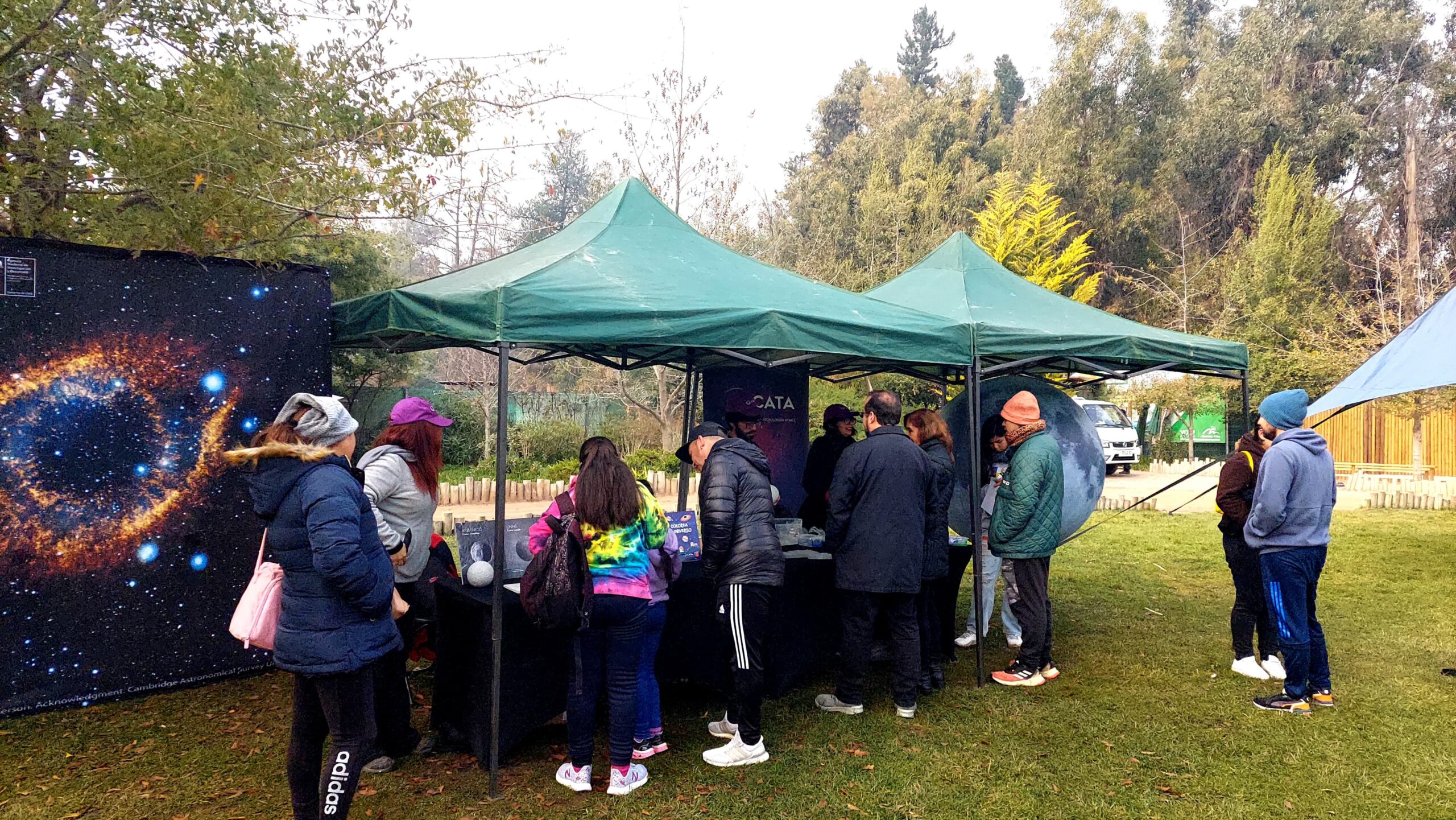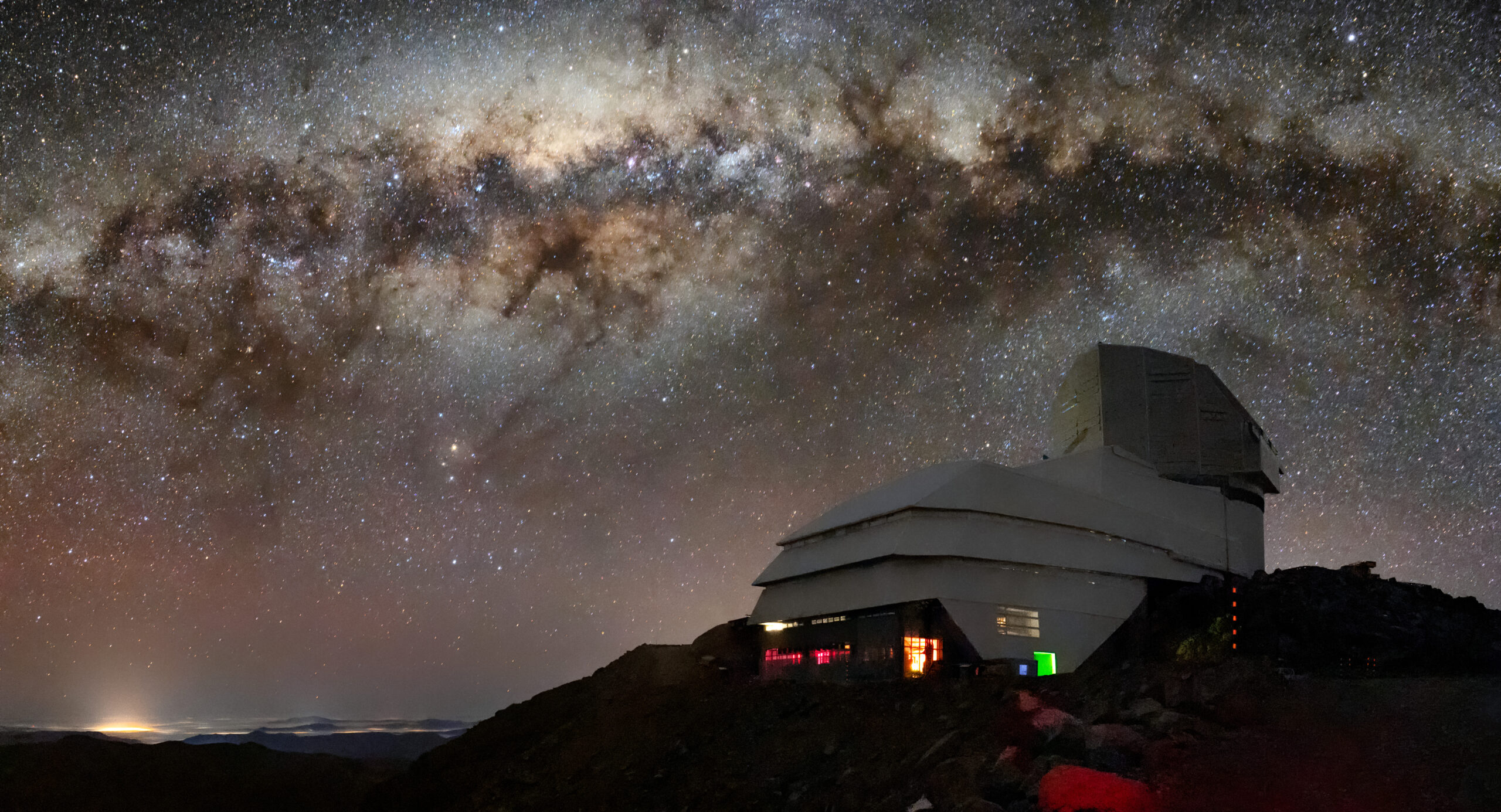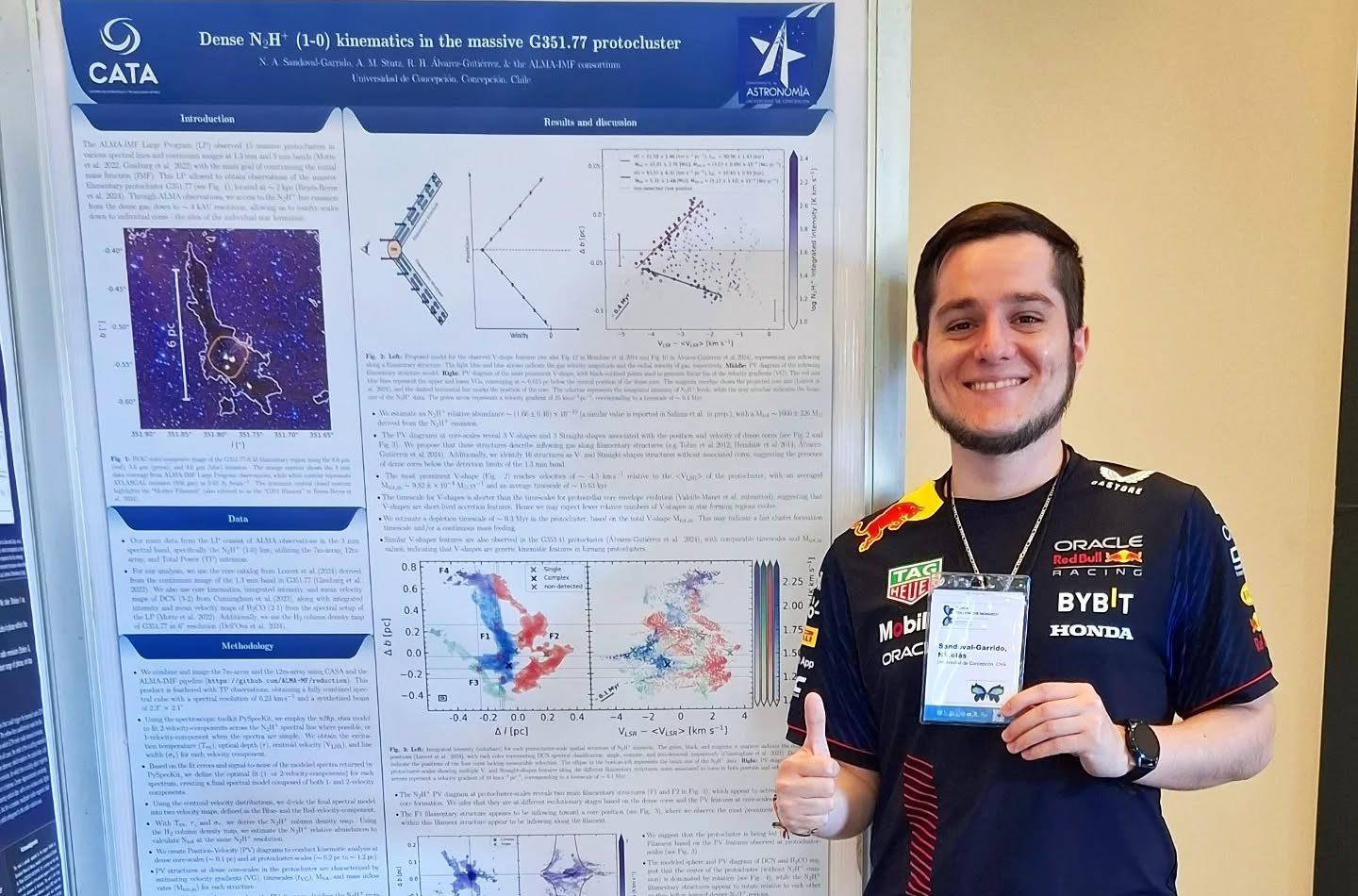
CATA researchers present at the General Assembly of the International Astronomical Union
The meeting, one of the most relevant in astronomy worldwide, brought together more than 3,000 professionals and researchers in South Africa and analyzed the present and future of this science, based on the research and technologies installed and to be implemented. Among the speakers were CATA Director Ezequiel Treister and the Center's Principal Investigator Roberto Assef.
This month the 32nd General Assembly of the International Astronomical Union (IAU/IAU) was held in Cape Town, South Africa. A meeting that focused on how research conducted in various astronomical study facilities around the world is shaping a better understanding of the Universe, along with presentations in related areas such as education, development, diversity, equity, dissemination and instrumentation.
On this occasion, for the first time it was held on the African continent, specifically in Cape Town, where more than 3,000 scientists from all over the world arrived, and it also had an unprecedented hybrid format, so that, in addition to those attending in person, many more researchers could join remotely.
Ezequiel Treister, director of the Center for Astrophysics and Related Technologies, CATA, and an academic at the Catholic University, participated in this prestigious meeting as a guest speaker.
In his talk “Properties of the Molecular and Atomic Gas in AGN in Mergers from ALMA and VLT/MUSE Observations”, he discussed the results of his and his research team’s observations from ALMA of molecular gas in colliding galaxies containing growing supermassive black holes (AGN).
“The gas is fundamental, because it feeds and regulates the black holes during the merger. This is behavior that is not yet fully understood. Mainly, what I presented are the latest observations we have taken with the ALMA radio telescope, showing data of the highest sharpness and sensitivity that have been obtained so far from some of the systems we have discovered in recent years, as part of our research and our work,” details Ezequiel Treister.
The CATA Director adds that this work continues and the goal is to finally understand how the supermassive black holes that live in the centers of galaxies end up merging during the collision of galaxies.
“So that’s a big challenge that we are working on. For me as a researcher and as Director of CATA, this is a great opportunity, it’s an honor to have received an invitation to give a talk at what is the biggest conference in world astronomy. Besides, this is a collaborative science, so maintaining these contacts, exchanging ideas, designing new projects, improving your work thanks to the comments and suggestions you receive, is really fundamental”, argues the researcher of the Catholic University.
As part of the activities, Roberto Assef, Principal Investigator of CATA and full professor at the Institute of Astrophysical Studies of the Diego Portales University, also presented at the associated symposium “All-Inclusive AGN”.
“My invited talk consisted of presenting a review of the field on the topic of galaxies hosting more luminous active supermassive black holes. That is, to do a quick review of the properties of those galaxies to better understand how they are affected by a very luminous AGN. It is an honor, of course, to have received this invitation and to be able to present in front of astronomers from all over the world. These instances allow us to learn from the discoveries that are being made everywhere and, above all, to discuss and exchange ideas with the astronomers who have participated in these discoveries. I think that these exchanges of ideas, both formal, through presentations, and informal, in discussions over coffee, are fundamental for the advancement of science,” said the CATA astronomer.
The topics were broad and five resolutions were approved at the end of the Assembly. The first refers to a strategic plan to promote astronomy by 2030. Two others establish precise terrestrial and celestial reference systems to be used in a unified manner at the international level. Another is aimed at stimulating the preservation and digitization of historical archives containing astronomical data. Finally, a resolution was passed on the advisability of renaming the Hubble Law on the expansion of the universe to the Hubble-Lemaître Law, although it awaits confirmation after a consultation with the 12,000 members of the IAU.
Another important topic addressed at this global meeting was the protection of the dark and quiet skies, particularly in the context of the growing number of satellite constellations in low-Earth orbit.
Recent news
-
 Publicado el: 09/07/2025Patricia Tissera is recognized as full professor by the Pontificia Universidad Católica de Chile
Publicado el: 09/07/2025Patricia Tissera is recognized as full professor by the Pontificia Universidad Católica de Chile -
 Publicado el: 04/07/2025CATA researchers among the best in Chile according to international ranking Research.com
Publicado el: 04/07/2025CATA researchers among the best in Chile according to international ranking Research.com -
 Publicado el: 30/06/2025CATA Director strengthens ties in her second institutional tour
Publicado el: 30/06/2025CATA Director strengthens ties in her second institutional tour -
 Publicado el: 30/06/2025CATA celebrated Asteroid Day 2025 at the Pueblito de Las Vizcachas Park
Publicado el: 30/06/2025CATA celebrated Asteroid Day 2025 at the Pueblito de Las Vizcachas Park -
 Publicado el: 26/06/2025Vera C. Rubin: the telescope that watches the sky and anticipates the future of astronomy
Publicado el: 26/06/2025Vera C. Rubin: the telescope that watches the sky and anticipates the future of astronomy
Categories list
- Acknowledgments 20
- Astrobiology 5
- AstroCluster 1
- Black holes 13
- Corporativo 49
- Cosmology 4
- Descubrimientos 19
- Disclosure 46
- Exoplanets 13
- Extension 4
- Galaxies 17
- Galaxies formation 2
- Inter y Transdisciplina 2
- Local Universe 13
- Publications 5
- Sin categorizar 31
- Solar System 11
- Stellar formation 6
- Technology 9
- Technology Transfer 12



